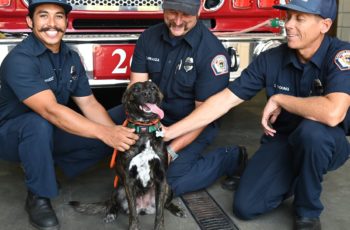When it comes to veterinary care, barriers to access, including a lack of trust on the part of dog owners, play a bigger role than differences in race, gender, or socioeconomic status, according to a new study. Findings could help veterinarians develop outreach strategies for underserved communities.
“I was interested in how different demographic groups viewed health care and how those views might affect relationships between veterinarians and their clients,” says study first author Rachel Park, a PhD student at North Carolina State University. “The existing literature wasn’t national in scope and hadn’t accounted for multiple identities held, such as one’s socioeconomic status or education, so I saw a knowledge gap that could be filled.”
For the study in Veterinary Sciences, Park used Amazon’s Mechanical Turk to conduct an online survey of 858 self-identified dog owners. The survey asked participants to indicate how likely they would be to seek veterinary care under 18 different circumstances. The survey also asked participants supplemental questions about their relationship with their dog, previous veterinary behavior, and demographic information.
While there was some variance for different medical scenarios, the overall likelihood of dog owners to seek care did not differ significantly across demographics, regardless of race, gender, or socioeconomic status. However, there were demographic differences related to barriers to veterinary care, as well as to the owner’s relationship with the dog.
GET THE BARK IN YOUR INBOX!
Sign up for our newsletter and stay in the know.
“We did see that women (58.0%), white (48.9%) and Asian (64.4%) dog owners were more likely to describe the dog as a member of the family, rather than as property, whereas some Black (24.4%) or Native American (25.0%) dog owners were more likely to consider the dog property,” says Park. “But the difference in the way the relationship was described didn’t carry over into a difference in likelihood to seek veterinary care.”
The primary barriers to care that respondents identified were transportation, veterinary office hours of operation, cost, language differences, and trust. Cost was a bigger factor for dog owners under 29 years old or households making less than $60,000 per year. However, these barriers—with the exception of trust—cut across all demographics: race, gender, education level, and socioeconomic status.
Black and Native American respondents were about 10 to 15% more likely to indicate a lack of trust as a barrier to seeking veterinary care.
“This was the most interesting finding,” Park says. “Respondents had the ability to select ‘had a bad prior experience with veterinarian’ as an option, but those who indicated lack of trust didn’t choose that as the reason. Research has long reported that racial and ethnic minorities often experience mistrust in health professionals in human medicine and consequently seek health care at a lower rate.
“Our findings reveal that Black and Native American dog owners experience a similar mistrust in veterinary medicine. This appears to be an important avenue for future research.”
While there are limitations to the survey—no statistical weighting to adjust for over- or under-sampling—Park says the results are still useful for identifying opportunities for outreach from the veterinary community.
“I’m hopeful that this study can help us better understand the barriers different communities face,” Park says. “Everyone wants to do what’s best for their dog, so the veterinary community has the opportunity to help ensure equal access to care and try and ease those barriers.”


